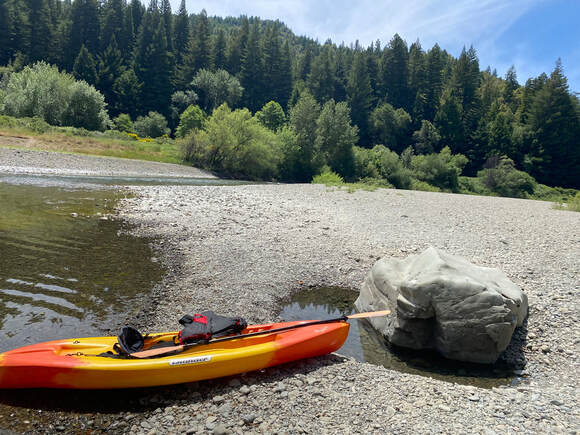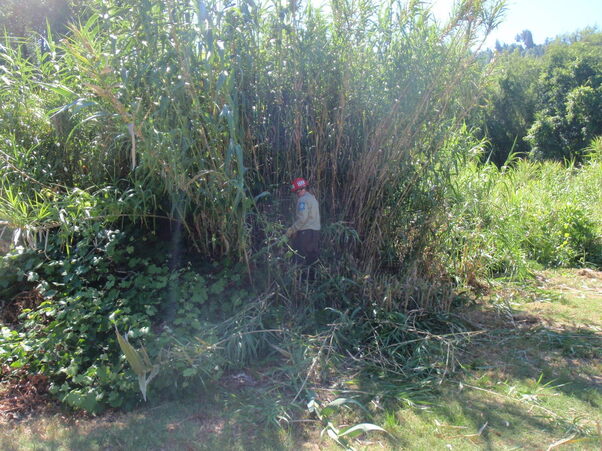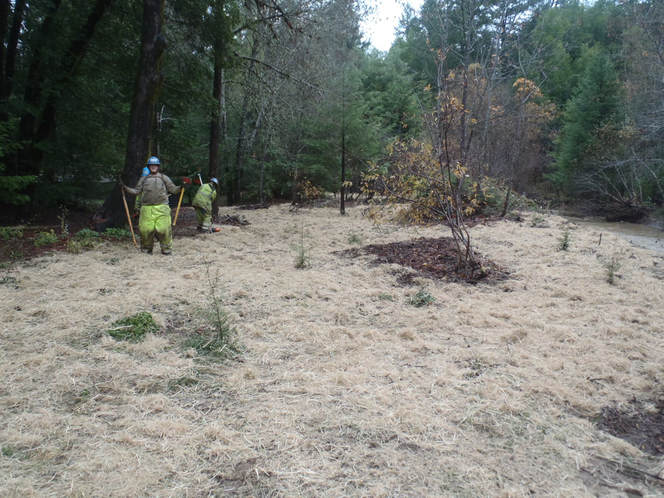When human activities and natural events cause riparian vegetation to be disturbed or lost, there can be dramatic changes in bank stability, channel form, and flood patterns. The result is a significant loss in habitat for native wildlife and property loss due to erosion. Re-vegetation projects attempt to address these issues by re-establishing native vegetation at degraded sites and restoring natural processes and functions to the riparian zone.
Projects
Eel River Arundo donax Eradication Planning Project

Arundo donax can be found throughout California, particularly growing in riparian zones. As a non-native and invasive plant, Arundo has few predators and is able to outcompete native plants while providing very little benefit to native insects and animals. Arundo spreads very easily, can dominate riparian vegetation and once established, is very difficult to remove. Arundo jeopardizes riparian habitat for birds and insects (Herrera & Dudley, 2003). Arundo has been found in the Eel River watershed and if left untreated, may dominate the riparian zone as it has in other California watersheds.
This project consists of surveys to identify “patches” of Arundo, collection of location, descriptive data of the patches and the development of a treatment plan for all the identified Arundo along the Eel River. Surveys are conducted by boat and hiking the river floodplain. Additionally, public outreach will occur to inform the Eel River community of the invasive nature of Arundo and to help identify locations of Arundo not found during the surveys. If you think you have seen Arundo along the Eel River, please reach out to us!
This project was funded by the California Department of Fish and Wildlife Watershed Restoration Grant.
This project consists of surveys to identify “patches” of Arundo, collection of location, descriptive data of the patches and the development of a treatment plan for all the identified Arundo along the Eel River. Surveys are conducted by boat and hiking the river floodplain. Additionally, public outreach will occur to inform the Eel River community of the invasive nature of Arundo and to help identify locations of Arundo not found during the surveys. If you think you have seen Arundo along the Eel River, please reach out to us!
This project was funded by the California Department of Fish and Wildlife Watershed Restoration Grant.
Arundo donax Eradication

Arundo looks like a cross between corn and bamboo and grows quickly and aggressively. Its height and speedy growth lead it to be a desirable plant for privacy screens. Unfortunately its quick growth rate also allows it to easily get out of control. Arundo planted along streams will break apart during flood events and deposit downstream. Every piece of arundo can re-sprout, so this process leads to many new plants along the river.
ERWIG is working to remove Arundo donax from the Eel River watershed before it outcompetes native stream plants and takes over. Each year we look for patches of arundo and team up with landowners, the California Conservation Corps and the Sonoma Ecology Center to eradicate any that we find. Please contact us if you have arundo on your property and would like it removed.
Native Plant Revegetation

At the conclusion of most instream restoration projects native trees and plants are planted in areas disturbed during project implementation. Sometimes invasive species such as Himalayan blackberry or pampas grass are removed prior to planting in order to ensure that the natives have a chance to re-establish themselves.
Planting typically take place in the early winter, giving the plants all winter and spring to establish roots in the cool, wet weather. Typically we plant redwood and Douglas fir, but the species will vary in order to match the community of plants already existing in the watershed.
Want to get involved?

